Without a doubt, cannabis is one of the most resistant crops in the world. When it comes to the commercial farming industry, cannabis is more readily available in nature than just about any other cultivated crop, growing wild on just about every continent aside from Antarctica unless, of course, a miraculous growing room somehow appeared on this icy mass of land.
Nevertheless, even with marijuana’s almost absurd durability and resistance, problems can arise, oftentimes unforeseen. Usually, if an individual is undertaking the challenge of producing marijuana on a commercial level, they are quite serious and dedicated to the task because the initial financial investment is simply too risky otherwise. This means they are paying close attention to their plants, watching them with the utmost care, but some problems are just unpredictable.
One circumstance in particular is the appearance of a virus, and once a cannabis virus hits, it cannot be cured; the crop must be destroyed and separated from the other, still healthy plants. Even if the arrival of a virus is capricious, certain preventative measures can be implemented that decrease the likelihood that your batch could become infected.
Throughout this article, we will explain in depth the various types of viruses that commonly affect the cannabis plant, along with the causes and potential damages that these infections can cause. Disease is likely to affect all types of crops and has been a long-time nuisance in many farming communities, but with the continued dedication and effort executed by those who are committed to producing healthy crops, the likelihood of these difficulties spreading is less plausible.
Just as they say it takes a village to raise a child, it takes a strong community to diminish the overall effects of plant viruses. The first step in this process is education. Hence, our aim is to inform the public not only for their own benefit but also for the interest of the entire cultivation community.
Keep reading to discover how to keep your plants healthy and virus-free with our informative guide…
Some Important Things to Note:
Those who choose to cultivate their marijuana crops indoors will have more control over the conditions, in addition to catching the spread of a potential virus quicker, so if infection is something you worry about, take into consideration the possibility of letting your ladies thrive inside. Indoor growing is not an ideal circumstance for all, but weigh the pros and cons of outdoor/indoor operations and make an informed decision that suits you. Regardless of where you cultivate your marijuana, two things are vital for a successful harvest:
- Keep your growing area clean and organized. Maintaining a tidy space lessens the possibility of cross-contamination between plants, since an untidy environment encourages the spread and migration of pathogens. Keep the environment in which your cannabis is grown in hygienic because if commercial production is your intention, excellent hygiene is not only recommended but also a necessity and an industry standard.
- Watch your cannabis plants closely. Your crops cannot express how they are feeling with words (although we all wish this was possible), so it is important to openly watch your flowers because they express their state through their outward appearance. As a grower, it is your responsibility to recognize issues when they arise and correctly diagnose the problems so that the proper corresponding treatments can be applied and the crops can (hopefully) make a full recovery. This is another reason that education is key; if you do not know the signs to look out for, they will easily be missed.
What Exactly is a Virus/Plant Virus?:
A virus, translated as “poison” in Latin, is essentially a particle of microscopic size that is capable of infecting the cells of any biological organism, whether it be a human, animal, plant, or something else. Plant viruses, in particular, are a specialized form of these microscopic structures that attack plant organisms. Viruses are intracellular parasites, meaning they cannot actually reproduce without a host organism. In the case of a plant virus, the host is some type of vegetative living material. Plant viruses are also sometimes referred to as phytoviruses, because phyto in Greek means plant. The phytovirus is understood a bit less than its counterparts, which affect animals. This article will cover the information that is available, in particular, the most common phytoviruses to attack marijuana plants – especially the most devastating ones.
Tobacco Mosaic Virus (TMV):
The Tobacco Mosaic Virus, sometimes referred to by its acronym TMV, was initially identified as an infection occurring amongst tobacco crops, hence its name, but it is also perfectly capable of contaminating other plant species, including cannabis. The Tobacco Mosaic Virus is probably the most commonly identified virus impacting the marijuana species, and although this annoyance is not able to harm humans or make them sick, it does severely impact marijuana plants, often lessening yields and extending vegetative periods.
What to look out for:
- Water leaves that are folded or twisted in a way that is unnatural or uncharacteristic of typical marijuana leaves.
- Water leaves that have yellow stains, stripes, or a strange pattern present. This pattern usually looks mosaic-like.
- The above appearance will be present on more than one leaf; it will be visible on a few, several, or many.
- Note: Not all infected plants will show these physical symptoms because they could simply be hosts for the infection. These plants are harder to identify, but they they do need to be removed to avoid the infection of other, healthy crops.
Hemp Streak Virus (HSV):
Another common disease that can impact the marijuana crop, the Hemp Streak Virus first became present among fields of hemp, a close relative of marijuana. Sometimes called HSV, this infection, much like TMV, can ruin crops and leave you with a decreased yield and slower growing plants.
What to look out for:
- Chlorosis, present as a discoloration in water leaves, often appears as a pale green shade instead of the usual rich, hearty green.
- Presence of brown flecks that are surrounded by pale green halos, usually appearing on the water leaves of the plant. Most common in dry weather.
- Sometimes, streaking can materialize, but this is more common in moist weather.
- The entire body of the plant can take on a wilted appearance, looking like it has been dying due to a lack of nutrients or water. This could really just be the virus.
- Water leaves become rolled, usually upwards or into spirals.
Some other common diseases that are said to impact cannabis include the Arabis Mosaic Virus, Alfalfa Mosaic Virus, Squash Mosaic Virus, Panicum Mosaic Virus, Strawberry Latent Ringspot Virus, Cucumber Mosaic Virus, Tobacco Rattle Virus, Hemp Mosaic Virus, Tobacco Streak Virus, and many others.
Ways to Protect Your Cannabis Crops
If you are fearful of your plants contracting a virus, there are some ways that you can protect your crops to minimize the probability of infection.
- Carefully select your variety: Some varieties of cannabis are known for being heartier and more disease-resistant than others, which does not prevent the possibility of a virus, but it does mean the plant may be capable of a healthier life and greater yields, regardless of the presence of a virus or another disease/pest/infection related issue.
- Implement proper hygiene practices: Plant viruses are known for spreading through direct contact, and for this reason, infected plants can be passed from one crop to another even by human hands. Soil, dead material, growing supplies, pots, and the operation surfaces can all pass viruses along as well, so continuously wipe-down and disinfect surfaces, always switch out your soil and dispose of used materials if you believe an infection may have been present. Keep your employees or coworkers in check by making sure they do the same.
- Fertilize, fertilize, fertilize! Fertilizer is not going to cure a plant virus, but it does help remove the possibility of a false diagnosis. The presence of malnourished crops can sometimes produce symptoms similar to those caused by a virus infection, and for this reason, maintaining the overall health and well-being of your plants is truly necessary so that you can look out for them with the best possible care.
- Avoid tobacco use at the workplace, or the presence of another corresponding plant: Plant viruses are not known to only infect marijuana; all of them have roots with some other type of crop, and depending on what virus you believe your yield may possess, it is best to avoid plants in the workplace that are known for carrying the various viruses on this list. In particular, TMV, or Tobacco Mosaic Virus, is one of the most common phytoviruses thought to infect the marijuana plant, so avoiding the handling or consumption of tobacco within the grounds of the growing operation may be a wise idea. If you decide to smoke between work shifts, immediately wash your hands before once again handling the cannabis crops. This could be the difference between an infected and uninfected grow.
- Quarantine infected crops: Sometimes the appearance of a virus is inevitable, and if you happen to notice that one of your plants has become infected, it is vital to act in a timely manner so that the rest of your yield will not be impacted. This means a full-fledged quarantine! Remove the infected crops from the area immediately, dispose of them properly, and disinfect all surfaces/materials/soils/growing supplies that came into contact with the infected plants, including your hands! The biggest mistake in clearing out the infection forgets to wash your hands afterward, then handling still healthy plants. This passes the disease onwards to them and the process will have to be repeated all over again, which is definitely not fun and certainly is counterproductive.
Final Thoughts on How to Keep Your Plant Healthy and Virus Free
Even though a viral infection occurring within a crop of cannabis plants sounds simply awful, it is not the end of the world. Not a ton of information is understood about how phytoviruses impact marijuana exactly, but one thing is said to be true: Your yield will not be completely devastated even during the presence of a virus. Yields are said to be stunted, and plants grow slower, but your crops may still produce product nonetheless.
Consuming infected bud is also not thought to be dangerous to human health – the presence of a phytovirus is mostly a nuisance, if anything.
Before concluding that your crops are absolutely infected by a plant virus, check all the other possibilities first. The symptoms of an infection can mimic other issues, like lack of nutrients, underwatering or overwatering, improper soil application, negligible climatic conditions, and so on and so forth. The presence of a phytovirus is, in theory, quite rare amongst marijuana plants when compared with all the other possible pests/diseases/molds/mildews and other nuisances that are more likely to impact cannabis, so eliminate every other possibility and extensively observe your herb before assuming.
If you are considering cultivating cannabis on a commercial level and want to remain informed about all the potential possibilities that could impact your yields, then this article is presented to serve as educational material to provide details pertaining to this topic, specifically in the realm of plant viruses that may influence the marijuana harvest.
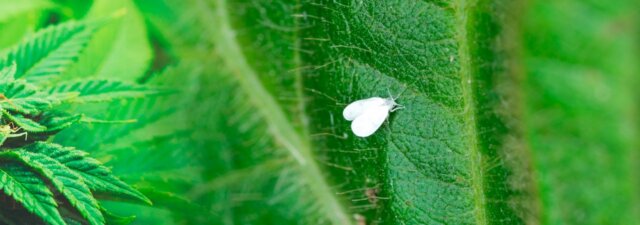

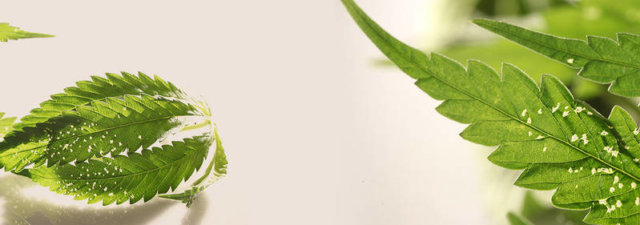


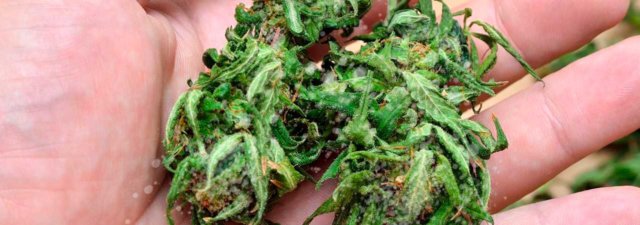

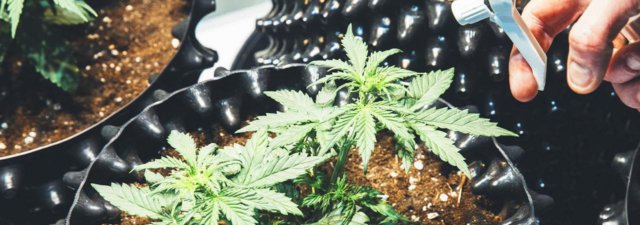
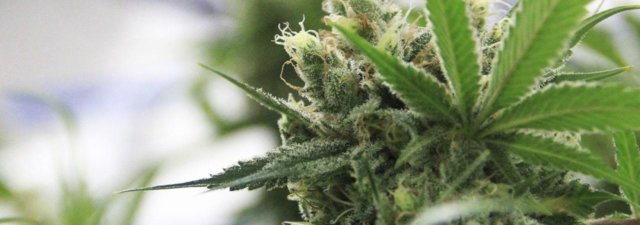
![How to Grow Super Silver Haze Weed [8 Tips]](https://marijuanabreak.com/wp-content/uploads/2018/10/mj_tips-for-growing-super-silver-haze_1920-640x225.jpg)
![Grow Bigger Cannabis Buds Outdoors and Indoors [FIND OUT HOW]](https://marijuanabreak.com/wp-content/uploads/2018/09/mj_how-to-grow-bigger-cannabis-buds_1920-640x225.jpg)

